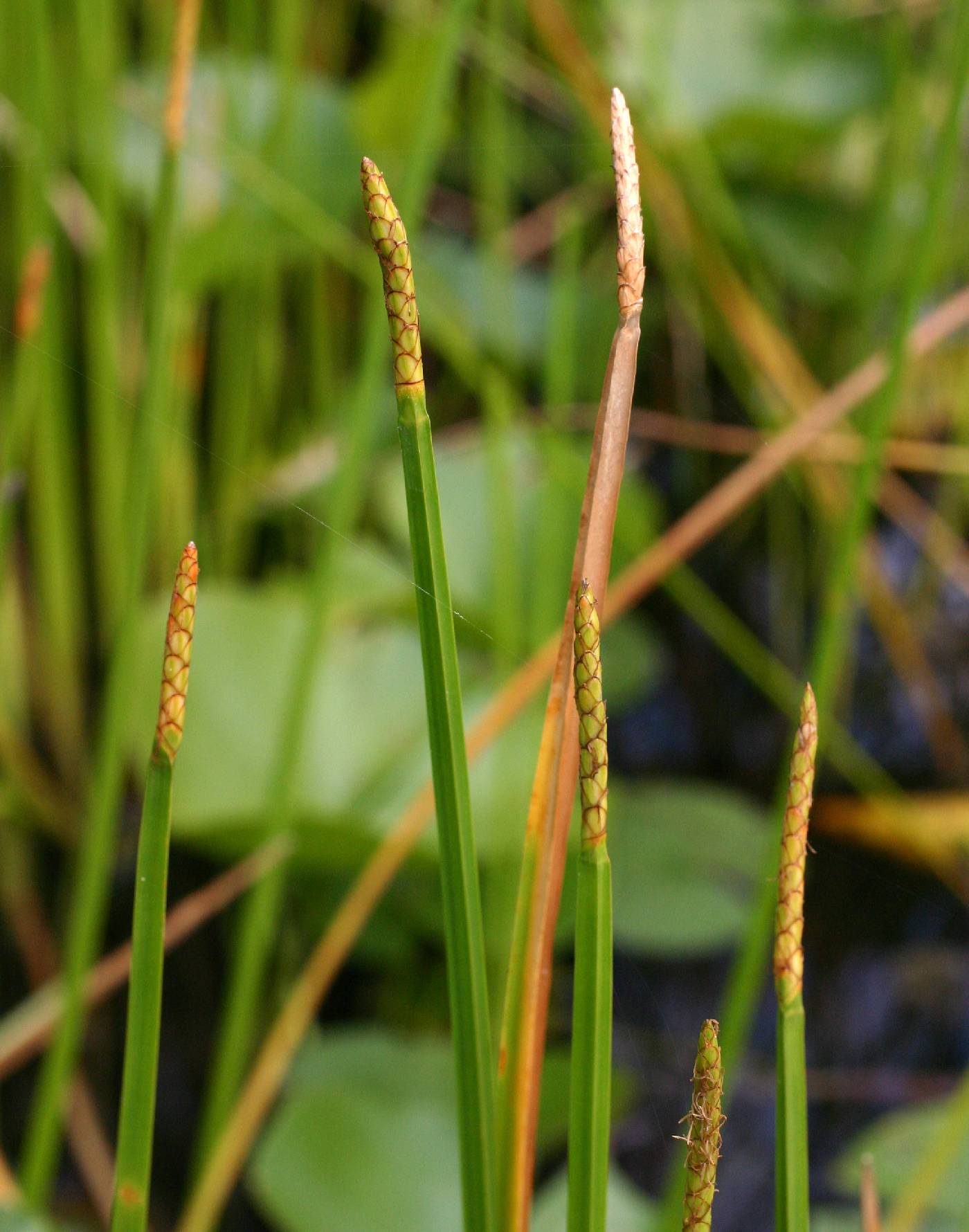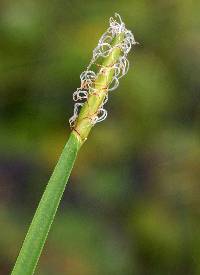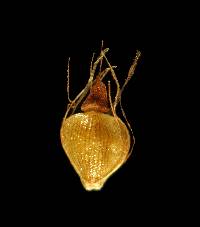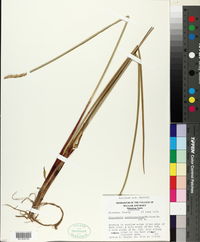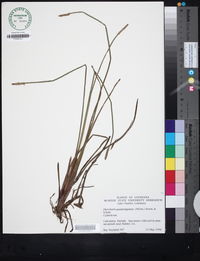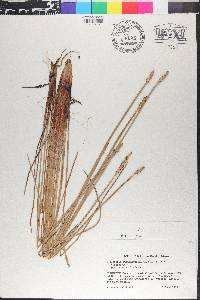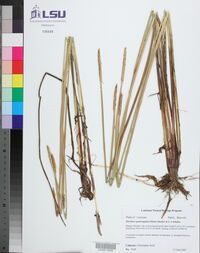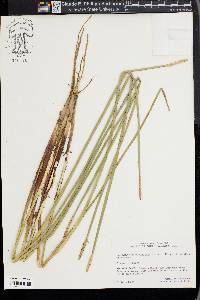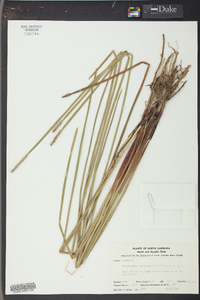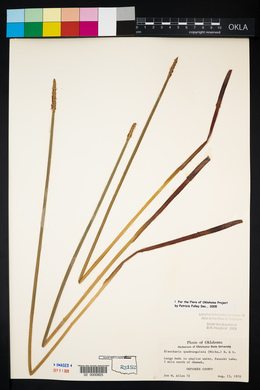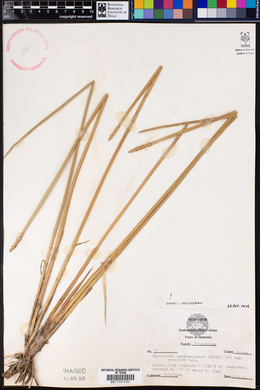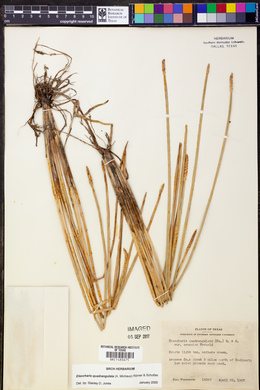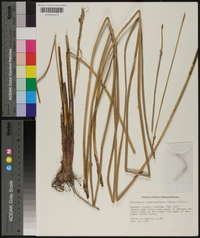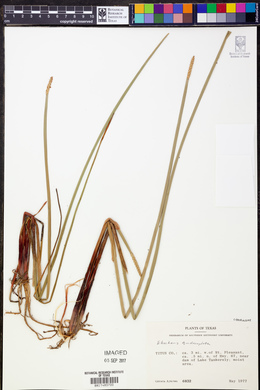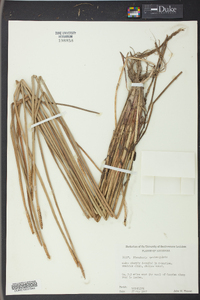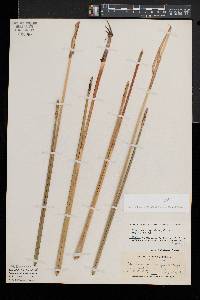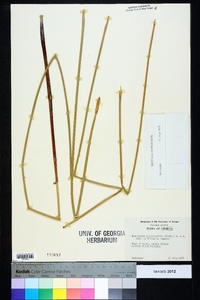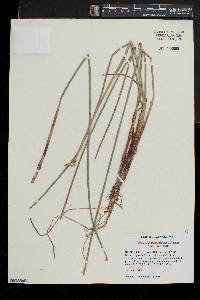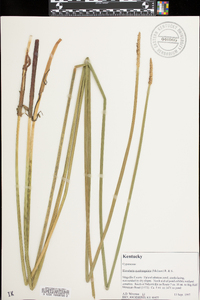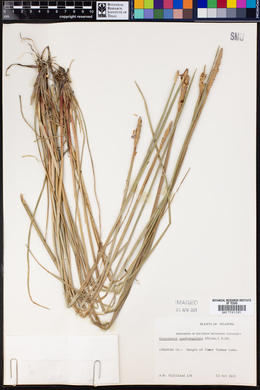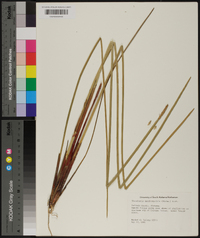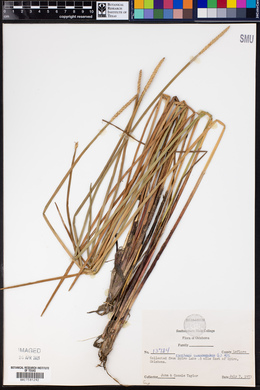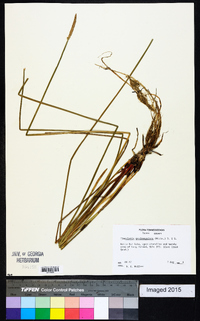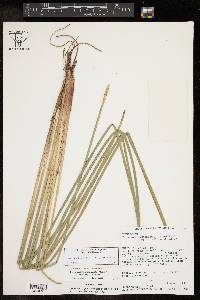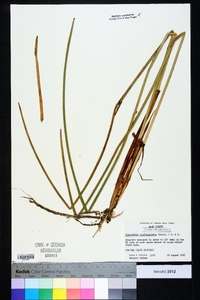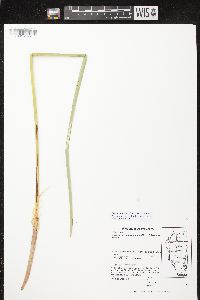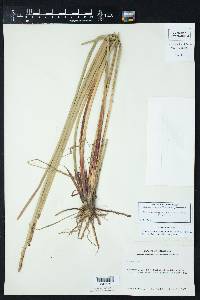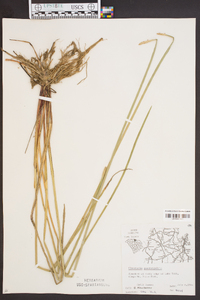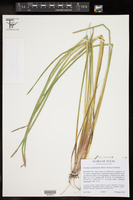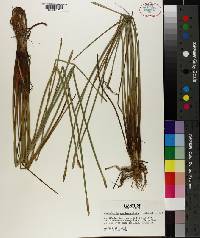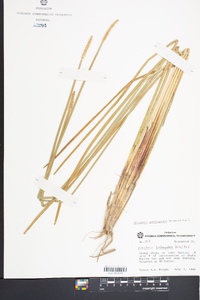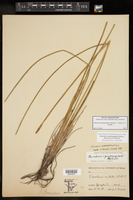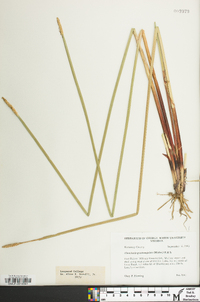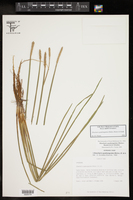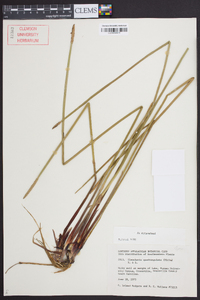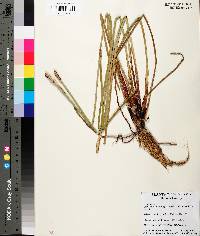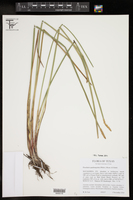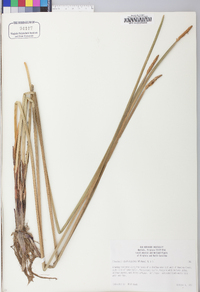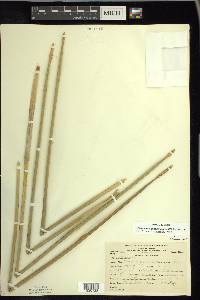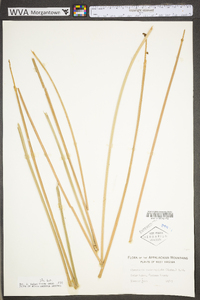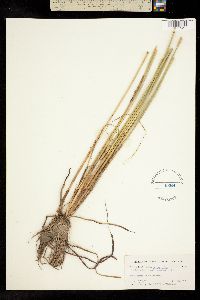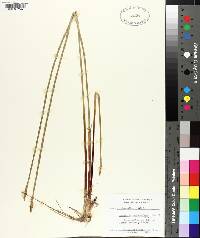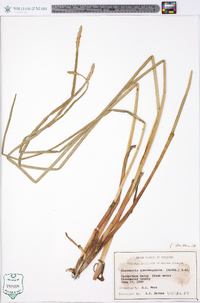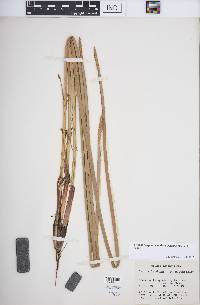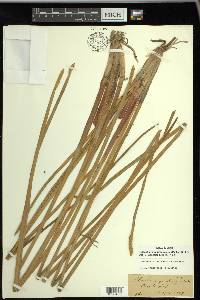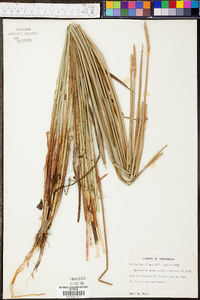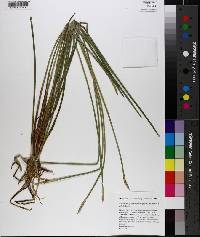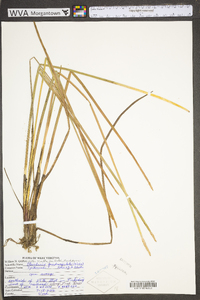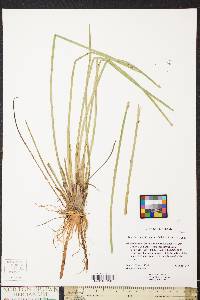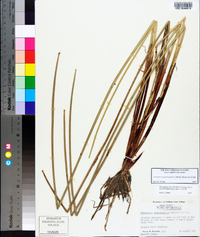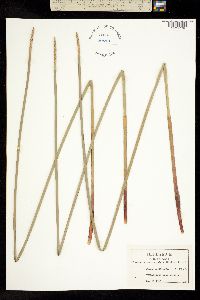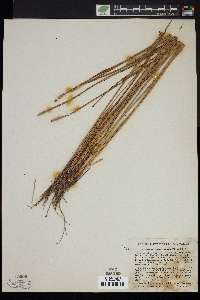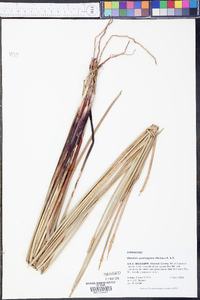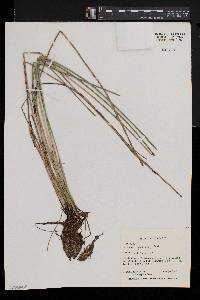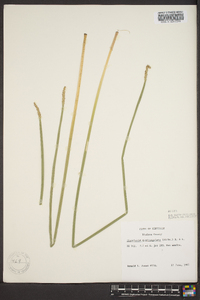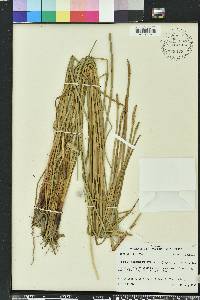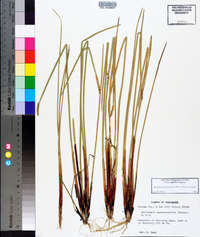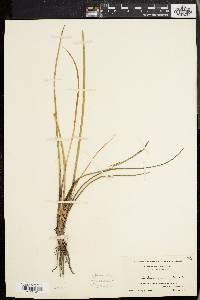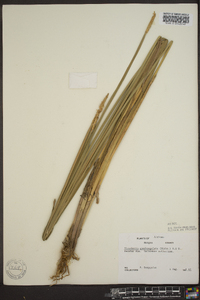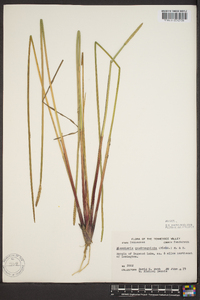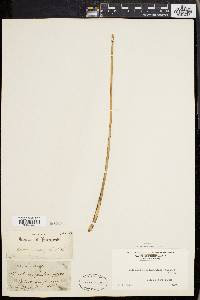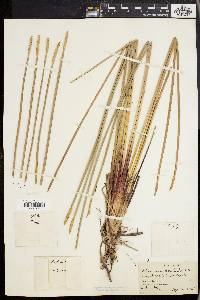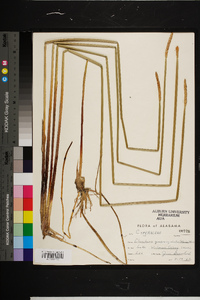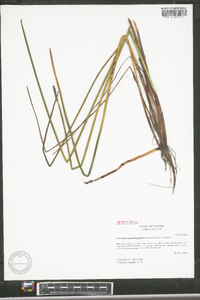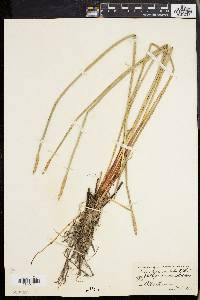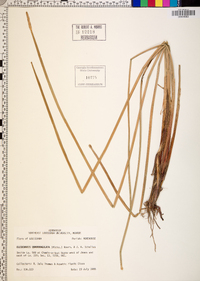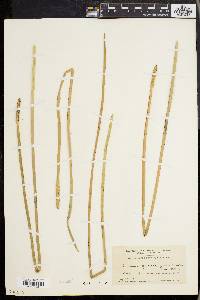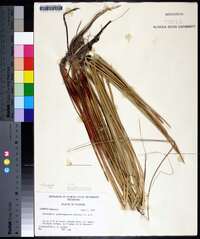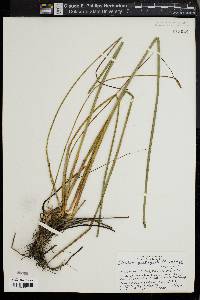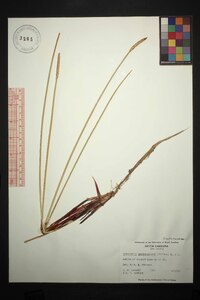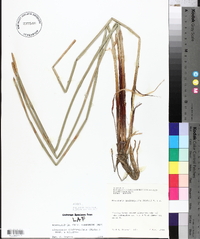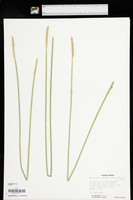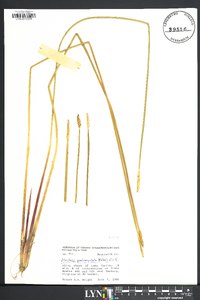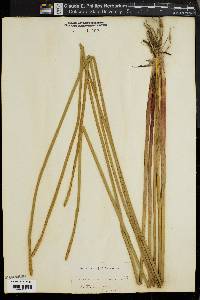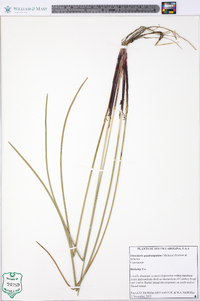
|
|
|
|
Family: Cyperaceae
Square-Stem Spike-Rush, more...squarestem spikerush
|
Plants perennial; rhizomes 1.5-4 mm thick, soft to hard, longer internodes 3-8 cm, scales 5-10 mm, tubers absent. Culms acutely quadrangular, (30-)45-105 cm × (1-)2-5.4 mm, soft to firm, internally spongy, transverse septa incomplete; plants never forming filiform, flaccid culms. Leaves: distal leaf sheaths persistent, membranous, apex narrowly acute to acuminate, sometimes prolonged into a bladelike portion to 8 cm. Spikelets not proliferous, (15-)20-76 × 3-5(-6) mm; rachilla joints bearing obscure winglike remnants of floral scales; proximal scale empty, amplexicaulous, (1-)2.2-5.4 mm; floral scales (28-)45-135, 2-3 per mm of rachilla, stramineous to pale brown, usually with pale to dark brown submarginal band, midrib region sometimes greenish, broadly obovate to ovate, (4-)4.5-6.2 × 2.8-5 mm, subcartilaginous, apex rounded to obtuse. Flowers: perianth bristles 6-7, whitish to brown, slender, often markedly unequal, shorter than achene or some equalling tubercle, sparsely retrorsely spinulose to smooth; anthers stramineous to red-brown, 2.3-2.9 mm; styles 3-fid, sometimes 2-fid. Achenes yellow or pale green to brown or purplish, biconvex, obovoid to obpyriform, 1.8-3 × 1.3-2 mm, almost smooth to markedly sculptured at 10-15X, each face with 19-38 rows of almost linear, transversely elongated cells, which are sometimes isodiametric at achene base, apex often constricted to neck 0.3-0.4 mm wide. Tubercles dark brown or whitish, deltoid to high-pyramidal or lanceoloid, 0.7-1.5 × 0.4-1 mm, often spongy. Fruiting early summer-winter. Shallow water of fresh lake and pond shores, marshes; 10-600 m; Ont.; Ark., Calif., Conn., Del., Fla., Ga., Ill., Ind., Ky., La., Mass., Mich., Miss., Mo., N.J., N.Y., N.C., Ohio, Okla., Oreg., Pa., S.C., Tex., Va., W.Va., Wis.; s to c Mexico. We have not seen voucher specimens for the reports of Eleocharis quadrangulata from Kansas. Plants with greenish achenes, longer bristles, and longer anthers than the average are known from Tennessee. The tubercles of Eleocharis quadrangulata are often spongy as in E. obtusetrigona.
Perennial herb with slender rhizomes, tufted 45 cm - 1 m tall Leaves: reduced to bladeless sheaths, basal, two per culm, margins fused and enclosing culm, with a pointed apex, membranous, sometimes prolonged into an 8 cm long "blade." Flowers: minute, spirally arranged on the axis of the spikelet, lacking sepals and petals, with six or seven bristles, subtended by a scale. Bristles whitish to brown, often unequal in size, shorter or longer than the achene, slender. Stamens exserted. Anthers straw-colored to reddish brown, to nearly 3 mm long. Pistil one. Style three-cleft, sometimes two-cleft. Fruit: a one-seeded achene, brownish, 2 - 3 mm long , 1 - 2 mm wide, biconvex, reverse egg-shaped to reverse pear-shaped with a constricted neck, nearly smooth. Tubercle whitish or dark, to 1.5 mm long and 1 mm wide, triangular to highly pyramidal or lance-shaped, often spongy. Seed with a thin, non-adherent wall. Culm: stout, unbranched, 45 cm - 1 m long, 2 - 6 mm wide, sharply four-angled, spongy inside, enclosed basally by two fused sheaths. Spikelets: solitary, 2 - 7.5 cm long, 3 - 5 mm wide (about as thick as culm), cylindrical, with 45 to 135 floral scales. Scales spirally arranged and overlapping, straw-colored to light brown with a submarginal band and sometimes greenish midrib, 4.5 - 6 mm long (bottom scale 2 - 5.5 mm long), 3 - 5 mm wide, broadly reverse egg-shaped to egg-shaped with a blunt to rounded apex. Obscure, wing-like remnants of floral scales are found in the joints of the spikelet axis. Similar species: No information at this time. Flowering: mid-June to late September Habitat and ecology: Rare in the Chicago Region. Found on shores or in shallow water. Occurence in the Chicago region: native Etymology: Eleocharis comes from the Greek words heleios, meaning "dwelling in a marsh," and charis, meaning grace. Quadrangulata means "having four angles." Author: The Morton Arboretum Cespitose and rhizomatous perennial; stems stout, to 1 m, 2-6 mm thick, sharply quadrangular; spikelet cylindric, (1.5-)2-5 cm, about as thick as the stem; scales in 4 rows, elliptic to obovate, 5-6 mm, broadly rounded, scarious-margined; bristles equaling or surpassing the achene; style bifid or trifid; achenes biconvex, obovoid, brown, 2-3 mm, constricted to an urn-shaped neck, marked with vertical rows of transversely elongate cells; tubercle dark, flattened, a third to half as long as the achene. Shallow water; Mass. to Wis., s. to Fla. and Mex., commoner southward. Gleason, Henry A. & Cronquist, Arthur J. 1991. Manual of vascular plants of northeastern United States and adjacent Canada. lxxv + 910 pp. ©The New York Botanical Garden. All rights reserved. Used by permission. From Flora of Indiana (1940) by Charles C. Deam In sandy or mucky soil in shallow water or on the borders of lakes, ponds, and sinkholes. ...... Indiana Coefficient of Conservatism: C = 4 Wetland Indicator Status: OBL |
|
|
|
This project was made possible in part by the Institute of Museum and Library Services [MG-70-19-0057-19].
Powered by Symbiota

